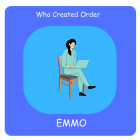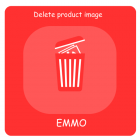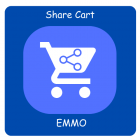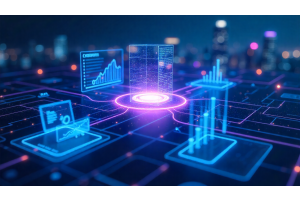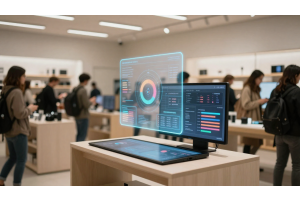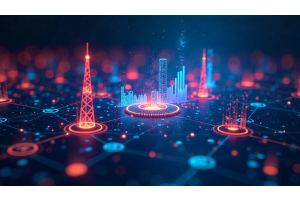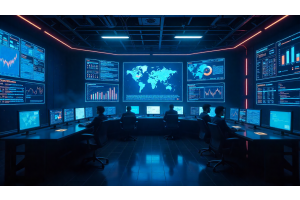Complete Product Design & Development Guide (2025)

Complete Product Design & Development Guide (2025)
Product design development transforms raw concepts into market-winning solutions that users love and businesses profit from. This systematic approach bridges the gap between creative vision and commercial success, delivering products that solve real problems while generating substantial returns.
Smart product design development drives measurable results. Companies investing in structured design processes see 2.3x higher revenue growth compared to competitors. The ROI speaks volumes - every dollar spent on user experience returns $100 on average.
Table Of Content
- Why Product Design Development Matters More Than Ever
- The 6-Phase Product Design Framework
- Choosing the Right Design Partner
- Full-Service Design Agencies: Comprehensive Solutions for Complex Projects
- Key Performance Metrics for Product Design Success & ROI
- Future of Product Design Development
- Summary
- FAQs
Why Product Design Development Matters More Than Ever
In today’s ultra-competitive and fast-paced digital landscape, product design development isn’t optional — it’s mission-critical. Modern users expect seamless, intuitive experiences right from the first click, while businesses face pressure to deliver faster without compromising quality or usability.
Whether you’re building a mobile app, SaaS platform, physical device, or consumer product, investing in robust design development from the start delivers a powerful ROI across every business metric.
Top 3 Reasons Product Design Development is Essential Today
1. Revenue Acceleration
Speed-to-market is a major competitive advantage. Products that are well-designed from the outset get to market faster and gain traction more quickly. According to recent data (2024), design-mature organizations outperform their competitors by up to 32% in revenue growth, thanks to faster product launches and better market alignment.
2. Cost Reduction Through Early Validation
Designing without validation leads to expensive mistakes. Research from recent product lifecycle studies reveals that the cost of fixing a problem increases exponentially the later it is found in the development cycle. Investing early in design prototyping, usability testing, and iterative feedback prevents costly rework.
3. Higher User Satisfaction & Retention
Products that prioritize user-centric design report 85% higher satisfaction scores and up to 67% better user retention within the first 90 days. Human-centered design not only improves usability but also boosts engagement, loyalty, and long-term product adoption.
Cost of Fixing Issues at Different Product Development Stages
| Design Stage | Cost to Fix Issue | Time Impact | Notes |
|---|---|---|---|
| Concept / Ideation | $1 | 1 day | Rapid iteration and user feedback reduce future development risks |
| Development Phase | $10 | 1 week | Code refactoring and redesign slow down sprint velocity and resource flow |
| Post-Launch | $100+ | 1+ month | Customer churn, reputational risk, patch updates, and possible rework |
The 6-Phase Product Design Framework
This updated, research-backed framework takes your product from vague concept to successful market entry. Each phase builds systematically on the previous one, ensuring alignment with user needs, business goals, and market realities. It's optimized to reduce time-to-market, avoid costly rework, and increase product-market fit.
Phase 1: Strategic Concept Development
Turn raw ideas into validated product concepts with real business potential.
Key Focus:
- Define the problem space
- Identify underserved user needs
- Articulate a compelling value proposition
Key Activities:
- Market trend analysis (industry reports, social signals)
- SWOT & competitive landscape evaluation
- Target persona definition based on demographics and behaviors
- Validation of high-priority pain points through exploratory surveys and data scraping (e.g., Reddit, Quora)
Phase 2: User Research and Validation
Ensure your product solves a validated, high-impact problem—before you build.
Research Methods:
- In-depth interviews (15–20 users): Explore habits, pain points, and workflows.
- Quantitative surveys (300–500+):Measure need, urgency, and willingness to pay.
- Usability gap analysis: Benchmark competitors’ strengths and failures.
- Customer journey mapping: Identify friction and emotional peaks.
Success Metrics:
- Problem validation: ≥ 80% of respondents acknowledge the issue.
- Monetization potential: ≥ 60% indicate willingness to pay.
- Clarity of solution: Defined end-to-end user journey and value path.
Phase 3: Rapid Prototyping and Testing
Speed matters. Reduce risk by validating early through fast prototyping loops.
Prototyping Stages:
| Week | Prototype Type | Objective |
|---|---|---|
| 1 | Paper or whiteboard sketches | Visualize layout and ideas |
| 2–3 | Clickable wireframes | Test core navigation and flow |
| 4–5 | Visual mockups (UI) | Align with brand and expectations |
| 6–8 | Functional prototypes | Validate full UX interactions |
Benefits:
- Reduce dev rework by 60%
- Cut time-to-MVP by 40%
- Gather real-time UX feedback in under 48 hours
Modern Tools:
- Figma, Balsamiq, Marvel App, Adobe XD
Phase 4: Design Validation and Optimization
Use data, not opinions, to refine your product. This phase ensures your solution is intuitive and delightful.
Testing Framework:
| Metric | Target | Measurement Method |
|---|---|---|
| Task Success Rate | ≥ 90% | Moderated usability testing |
| Time on Task | < 2 mins | Time-to-completion logging |
| Error Rate | < 5% | User behavior analysis |
| User Satisfaction | > 4.5/5 | Post-session feedback surveys |
Iterative Testing:
- Minimum 2 design-test-refine cycles
- A/B testing variations with real users
- Accessibility validation (WCAG 2.2 compliance)
Phase 5: Technical Implementation Planning
This is where many teams fail—by not translating design into developer-ready specs.
Key Deliverables:
- Technical requirements document: Defines functional scope, tech stack alignment, and feature priorities.
- Design system: Reusable components, spacing, color tokens, and typography for consistent UI.
- Edge-case handling: Scenarios for empty states, offline use, or invalid inputs.
- Performance specs: Load times <2s, responsive breakpoints, API latency tolerance.
Phase 6: Launch Strategy and Market Entry
Plan a launch that drives adoption, retention, and revenue.
Launch Components:
- Go-to-market plan: Messaging pillars, positioning statement, and competitive differentiators
- Pricing strategy: Based on willingness-to-pay data, cost modeling, and tiering strategies
- Channel strategy: Choose optimal distribution (SEO, email, app stores, product hunt, etc.)
- User onboarding: Guide first-use success through tooltips, tutorials, and minimal friction flows
- Growth Metrics:
- Activation rate (≥ 30%)
- Retention after 7 days (≥ 40%)
- NPS (≥ 45+)
Summary Table: 6-Phase Product Design Framework
| Phase | Focus | Key Activities | Success Metrics | Tools/Deliverables |
|---|---|---|---|---|
| 1. Strategic Concept | Idea clarity, market fit | Personas, SWOT, value proposition | Market gap identified | Strategy doc, concept canvas |
| 2. User Research | Validation with real users | Interviews, surveys, journey maps | 80% problem validation, 60% payment intent | Research repo, personas |
| 3. Prototyping | Test fast, fail cheap | Sketches, wireframes, mockups | Reduce dev time by 40% | Prototypes (Figma, XD) |
| 4. Design Validation | Optimize UX/UI | Usability tests, A/B testing | ≥90% task success, ≤5% errors | Test reports, iteration backlog |
| 5. Implementation Planning | Dev-ready specs | Style guides, tech docs, flow charts | 70% fewer delays | Design system, dev handoff |
| 6. Launch & GTM | Product-market entry | Onboarding, marketing plan, pricing | ≥30% activation, ≥40% 7-day retention | GTM roadmap, growth metrics |
Choosing the Right Design Partner
Selecting the right design partner is critical to the success of any digital project—whether you're building a new website, launching a product, or refreshing your brand. With countless agencies, freelancers, and consultancies offering similar services, it's essential to evaluate each potential partner strategically based on your specific project needs, budget, and timeline.
Key Factors to Consider
1. Project Scope & Specialization
Start by identifying the exact nature of your project:
- Is it a full website redesign, mobile app, UX optimization, or branding package?
- Does your project require niche expertise (e.g., eCommerce, SaaS platforms, healthcare UI)?
Design partners often specialize in specific industries or project types. Choose one that has direct experience with projects similar to yours.
2. Design Process & Methodology
A professional design partner should follow a clear, repeatable design process that includes:
- Discovery and research
- Wireframing and prototyping
- User testing and iteration
- Final UI design and handoff
Look for a partner that emphasizes user-centered design, accessibility, and responsive/mobile-first practices.
3. Portfolio and Case Studies
Review portfolios with a critical eye to assess quality and effectiveness:
- Are the designs functional and user-friendly?
- Do the case studies clearly explain the problem-solving process?
- Are the business outcomes measurable (e.g., improved conversions or engagement)?
4. Communication & Collaboration
Great design depends on strong communication. Evaluate:
- How responsive they are to questions
- Their ability to explain ideas in non-technical terms
- Their preferred tools for collaboration (e.g., Figma, Slack, Notion)
5. Technology Stack Compatibility
If your design partner will be working closely with your development team, ensure they:
- Are compatible with your tech stack (Magento, Shopify, React, etc.)
- Understand your CMS or platform
- Have a clear grasp of performance and SEO implications in design
6. Timeline & Availability
Ensure the partner can meet your deadlines without sacrificing quality. Ask:
- How many projects are they handling at the same time?
- What is their project management workflow?
- What’s their turnaround time for key deliverables?
7. Budget Transparency
Pricing models can vary based on your project scope and needs:
- Fixed-price for well-defined scopes
- Hourly or retainer-based for flexible or long-term engagements
Clarify what's included in the proposal—like the number of revisions, testing, and post-launch support—to avoid hidden costs.
| Criteria | Freelancers | Design Studios | Full-Service Agencies |
|---|---|---|---|
| Cost | $–$$ (Most affordable) | $$–$$$ | $$$–$$$$ (Most expensive) |
| Flexibility | High | Medium | Low–Medium |
| Expertise | Varies (niche or broad) | Specialized design focus | Wide-ranging across disciplines |
| Communication | Direct with one person | Small team; direct feedback | Structured teams; account managers |
| Scalability | Limited | Medium | High (can scale with large projects) |
| Ideal For | Small projects/startups | Mid-size projects, UX/UI excellence | Large-scale, end-to-end projects |
| Turnaround Time | Fast (varies per workload) | Moderate | Slower (multiple team handoffs) |
| Project Management | Often minimal | Usually agile or semi-formal | Formalized process with PM tools |
Tip
To enhance your eCommerce store’s performance with Magento, focus on optimizing site speed by utilizing Emmo themes and extensions. These tools are designed for efficiency, ensuring your website loads quickly and provides a smooth user experience. Start leveraging Emmo's powerful solutions today to boost customer satisfaction and drive sales!
Full-Service Design Agencies: Comprehensive Solutions for Complex Projects
Full-service design agencies are ideal for organizations tackling large-scale, multifaceted design projects. These agencies offer a wide array of design disciplines under one roof—from UX/UI design and branding to product design, industrial design, motion graphics, and more. Their integrated approach helps businesses streamline processes, ensure brand consistency, and execute high-quality design work across channels.
What Are Full-Service Design Agencies?
Full-service design agencies are firms that deliver end-to-end design services, typically including:
- UX/UI Design
- Web & Mobile Product Design
- Brand Identity and Strategy
- Industrial & Product Design
- 3D Rendering & Motion Graphics
- Marketing and Advertising Collateral
- Design Systems and Component Libraries
These agencies often work as an extension of your internal team, taking ownership of complex projects from discovery to delivery. Their multidisciplinary teams include project managers, researchers, developers, and senior designers, making them suitable for enterprises or startups with complex design needs but limited internal resources.
Advantages of Full-Service Design Agencies
| Advantage | Description |
|---|---|
| Complete Project Management | Agencies handle all project stages—strategy, research, execution, and QA—reducing oversight burden. |
| Cross-Functional Expertise | Teams span various design domains, bringing rich perspectives and holistic solutions. |
| Established Processes | Proven workflows, communication tools, and design methodologies lead to smoother execution. |
| Scalable Team Size | Ability to allocate resources based on project scope—ideal for growing or evolving needs. |
These advantages lead to higher design quality, faster problem-solving, and improved collaboration across stakeholder teams.
When to Choose a Full-Service Design Agency
A full-service design agency is best suited when:
- Your project budget exceeds $50,000 – These agencies are resource-intensive but offer exceptional value for larger investments.
- The timeline extends beyond 6 months – Long-term collaborations benefit from an agency’s stability and continuity.
- Multiple design disciplines are required – Integrated services ensure unified brand vision and faster execution.
- Internal design resources are limited – Agencies can plug skill gaps, scale quickly, and reduce hiring bottlenecks.
Latest Trends Influencing Agency Selection (2025)
- AI-Driven Design: Agencies now integrate AI tools to streamline ideation, prototyping, and testing.
- DesignOps Integration: More firms incorporate DesignOps roles to unify tools, workflows, and systems.
- Sustainability and Accessibility: Agencies prioritize environmentally responsible design and WCAG-compliant digital interfaces.
- Remote Collaboration Tools: Tools like Figma, Miro, and Notion allow seamless agency-client collaboration, even across time zones.
- Global Talent Access: Agencies hire globally, allowing broader creative input and 24/7 productivity.
Summary Table: Full-Service Design Agencies at a Glance
| Feature | Details |
|---|---|
| Ideal For | Enterprises or startups with complex, multi-channel design needs |
| Budget Range | Typically $50,000+ |
| Project Duration | 6+ months |
| Services Included | UX/UI, branding, product design, motion, marketing assets, systems |
| Team Structure | Cross-functional teams with scalable size |
| Best Use Case | When unified design output and end-to-end ownership are priorities |
| Common Tools Used | Figma, Sketch, Adobe Suite, Notion, Jira, Miro, Zeplin |
| Recent Trends | AI integration, DesignOps, accessibility, remote collaboration |
Key Performance Metrics for Product Design Success & ROI
Measuring the success of product design goes beyond aesthetics. Strategic tracking of performance metrics ensures your design efforts contribute directly to business growth, user satisfaction, and operational efficiency.
Why Metrics Matter in Product Design
Design isn't just about how something looks—it's about how it works and the value it delivers. Data-driven design decisions:
- Validate assumptions and reduce guesswork.
- Align teams around clear performance goals.
- Improve ROI by streamlining development and enhancing user experience.
- Enable continuous iteration through real-time feedback loops.
Categories of Design Performance Metrics
1. Business Metrics
These indicate how design contributes to overall business outcomes:
- Revenue Growth Rate
- Customer Acquisition Cost (CAC)
- Time to Market
- Development Cost Efficiency
Measures the financial impact of design changes or new product launches.
Design that improves messaging and onboarding can reduce CAC significantly.
Well-structured design systems can shorten development cycles.
Focuses on reducing rework, streamlining handoffs, and minimizing resource waste.
2. User Experience Metrics
These evaluate how users perceive and interact with your product:
- Net Promoter Score (NPS)
- Task Completion Rate
- User Retention Rate
- Support Ticket Volume
Indicates overall user satisfaction and loyalty.
Measures how easily users accomplish key actions—critical for usability.
Tracks long-term engagement and product stickiness.
3. Design Process Metrics
These focus on how efficiently your team operates:
- Design Iteration Cycles
- Prototype Testing Frequency
- User Feedback Incorporation Rate
- Cross-Team Collaboration Score
Measures how often designs are revised before approval—more iterations can mean better outcomes if efficient.
High frequency suggests a user-centered and agile design process.
Measures how much real feedback influences product direction.
Reflects communication quality between design, development, and product teams.
Performance Benchmark Table
| Metric Category | Metric | Good Performance | Excellent Performance |
|---|---|---|---|
| User Experience | User Satisfaction (NPS) | 7.0+ | 9.0+ |
| Task Completion Rate | 85%+ | 95%+ | |
| Business Impact | Time to Market | Industry average | 25% faster |
| Development ROI | 3:1 | 10:1+ |
Best Practices for Tracking Metrics
- Integrate Analytics Early
- Set Baselines and Benchmarks
- Automate Data Collection
- Align Metrics to Business Goals
- Review Regularly
Don’t wait until after launch. Bake measurement into your product roadmap.
Use historical data or industry standards to gauge success.
Use tools like Google Analytics, Hotjar, FullStory, or product analytics platforms to track interactions.
Not all metrics are relevant—focus on those that tie directly to KPIs and company strategy.
Set monthly or quarterly metric reviews to catch trends early and pivot when needed.
Future of Product Design Development
Design is rapidly evolving, driven by new technologies and shifting user expectations. Here’s what’s reshaping the field:
1. AI-Powered Design Systems
Artificial intelligence tools now assist with everything from wireframing to UI testing. AI reduces design time by 35% while improving consistency across platforms. Tools are also increasingly capable of performing automated A/B testing and real-time user sentiment analysis.
2. Voice, Gesture, and Sensor-Based Interfaces
Interfaces are moving beyond screens. Products now include voice control, motion detection, and touchless interaction, requiring designers to consider invisible UX, feedback cues, and new interaction patterns. These interfaces are crucial in IoT, smart home, and wearable devices.
3. Sustainable & Ethical Design
With growing demand for eco-conscious solutions, design must now account for product lifecycle, energy usage, and recyclability. Regulatory pressures and consumer expectations alike are raising the bar for ethical design, including considerations like dark patterns avoidance and data privacy.
4. Data-Driven Personalization
Personalized experiences increase user engagement by up to 80%, but they require dynamic design systems that can adapt to user behavior in real time. This shift demands scalable UX frameworks and modular component libraries integrated with live data.
5. Collaborative Design Platforms
Cloud-based tools now enable cross-functional teams to co-create in real time. Adoption of Figma, Webflow, and similar tools has risen over 200% in recent years, cutting handoff delays by 50%.
Taking Action
Begin your product design development journey with a solid foundation. Here’s how:
- Define Your Product Vision
- Identify and Understand Your Users
- Select the Right Design Approach
- Set Success Metrics
Articulate the problem you’re solving and how your product uniquely addresses it. Use a one-sentence value proposition to align teams.
Go beyond demographics. Use qualitative interviews, quantitative surveys, and analytics tools to build evidence-based personas.
Choose between in-house teams, freelancers, or external partners depending on your budget, timeline, and scope. Hybrid models often work best.
Track both design quality (e.g. task success rate, NPS, usability score) and business outcomes (e.g. conversion rate, churn rate).
Summary
Product design development is no longer just about aesthetics or basic usability—it's a strategic advantage. Companies that excel in this space invest early in user research, align closely with engineering, and continuously evolve based on real-world feedback. The best products today are not just well-designed—they're intelligently crafted, adaptive, ethical, and inclusive.
FAQs
What are the most common pitfalls in product design and development?
Common pitfalls include skipping user research, over-designing early versions, ignoring technical constraints, insufficient testing, neglecting accessibility, and a lack of collaboration or feedback loops.
Why is user research critical to product success?
Skipping user research leads to misaligned features and unmet needs. In fact, 42% of product failures are linked to insufficient user validation, making early testing and interviews essential.
How can over-designing delay product launches?
Over-designing initial versions increases development time by 60%. A lean MVP approach allows quicker feedback, faster releases, and better alignment with user needs.
What happens when technical constraints are ignored in design?
Ignoring technical limitations causes 30% of project delays. Involving developers early helps align designs with realistic engineering possibilities and prevents costly revisions.
How does AI impact modern product design?
AI speeds up concept generation and user behavior analysis. It can reduce design time by 35%, enhance personalization, and automate parts of research and testing workflows.
What are invisible interfaces, and why do they matter?
Invisible interfaces refer to voice and gesture-based controls that lack visual feedback. They present new UX challenges and require thoughtful design for clarity, accessibility, and user confidence.
Why is sustainable design gaining importance in 2025?
Sustainable design reduces environmental impact and meets rising consumer expectations. It includes eco-friendly materials, low-energy interfaces, and responsible production practices.
How does data-driven personalization improve user experience?
By learning from user interactions, products can adapt in real time. This leads to more relevant experiences, higher engagement, and better retention rates across platforms.
What steps should teams take to start product design development?
Key steps include defining the product vision, identifying users through research, selecting the right team model, setting measurable goals, mapping milestones, and securing the necessary resources.
How can companies ensure long-term success in product development?
Success comes from user-centered design, iterative testing, engineering collaboration, ethical considerations, and a process-driven approach that aligns business and user goals.
